I’m finally sharing pictures from my new garden. I’ve been using the garden, since it’s done, every single day. If is not raining or is not too hot, I would spend time in the garden reading for University. I even listen to lectures, with the headphones on, of course, as I imagine none of my neighbours is interested in the Spanish Civil War. Festus spends time in the garden too, or sits in the conservatory, as he prefers. My husband would like to use the garden more and hopefully he will, as the days will be less bright and it will be more comfortable to use the laptop outside.

I’m so very happy with how the garden turned out, so much better than I imagined and hoped for.
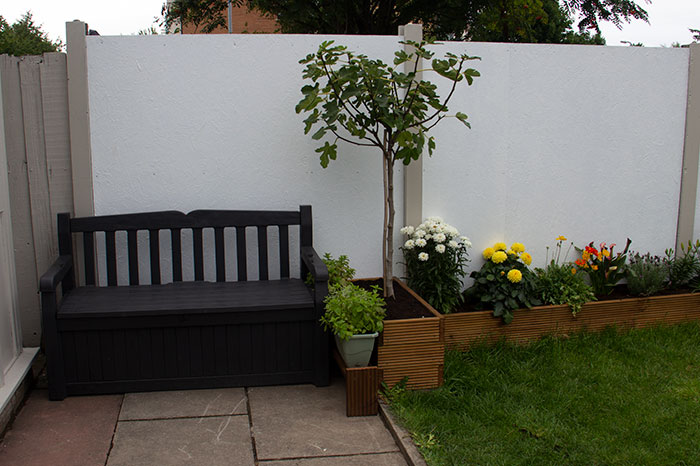
We got this bench and we ended up buying a second one like this. This allows us to use a bench each and there is plenty of space for book/laptop and a drink. Also, the additional storage space is very valuable.
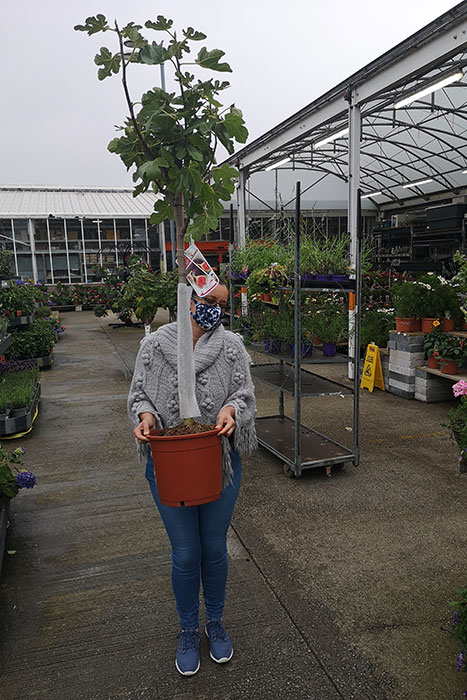
My husband snapped this picture after I picked up my tree. I spent a lot of time looking at all, trying to guess which one is the best and will last.

My fig tree is doing great. It’s been in its pot for over a month and the figs are growing, so it means that is doing very well.

The whole refurbishment process started with the passiflora. It was dying and I cut it back. See in the next picture how the garden looked before.

The picture is old. The bamboo screen was new at that time, but after a few years it didn’t look good anymore and needed to be replaced. In addition, 8 concrete posts needed changing and we’ve enlisted the help of the neighbours and sorted out the fence between us and them. It was hard work, but all of the posts were changed in 3 weeks! It’s impressive considering that we had to change on two sides and both neighbours were happy to start work imminently. Festus on the other hand is the same, he still loves to play.

From nearly dying, the passiflora recovered and now is in bloom. It’s fantastic.

I was thinking of changing the bird feeder, but the birds were a bit fazed by the new white fences and so I didn’t want to bring more changes for them. Maybe we can change the feeder next year.
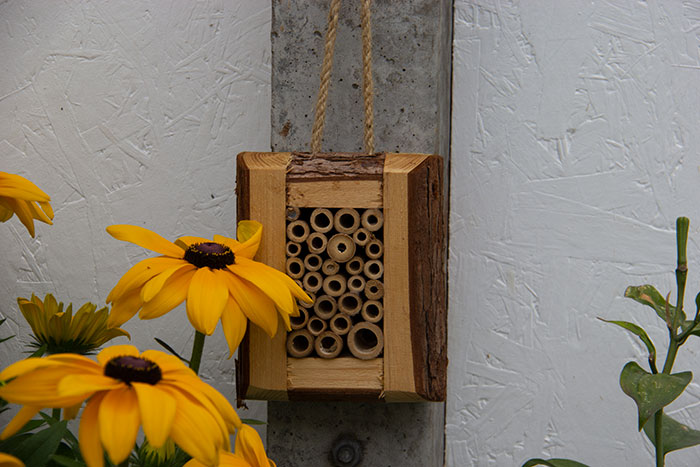
We also have a brand new Bug Hotel. It’s not used by bees, but other bugs are making it their temporary home, so that’s nice.
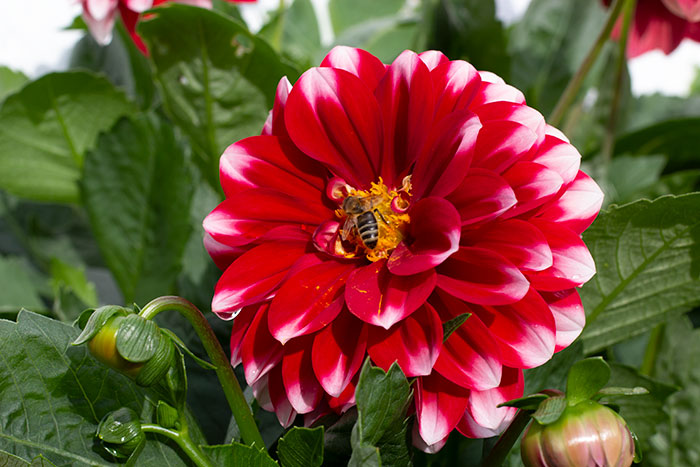
After finishing the back of the garden I had an idea to make a raised bed and fill it with flowers like Dahlia. It was a very good idea as the bees started to come more often, as you can see.

I was so keen that I wanted two more raised beds, on each side. After that I thought of having a tree and my husband wanted a tree. In the end we’ve made 4 pots for a climber and 3 trees. Every time I’m dead-heading the flowers or I’m cutting flowers for the vase I see at least one bee at the foxglove. If any of the other plants dies, I will replace it with a foxglove because it looks nice and it is very important for bees too.

Alliums are so nice, I love having these in the garden. Their flowers stay in bloom for a long time.

Poppies are very popular with bees too.
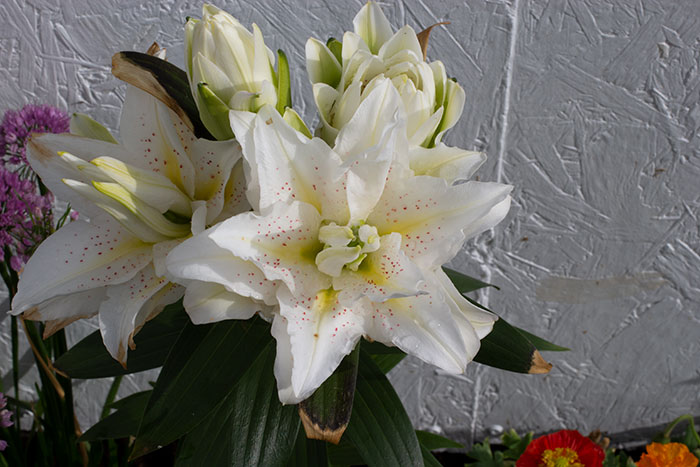
I thought that our garden is filled with flowers, but, when we went to get the last tree… I saw these gorgeous lilies and got some.
Now I’m going to share the names of the flowers in the raised beds. I’m doing that for two reasons: some of my readers might be interested in the names and I would very much like to know the names in a few months’ time. My gardening skills are minimal, so I need do to a bit of research and to have a proper list of names helps.

Left side of the garden (top; in the middle and bottom is the same raised bed). Flowers, from left to right:
White Daisy Chrysanthemum – side buds can be removed for bigger terminal flowers – in bloom from September to October – after flowering, cut back the main stem to about 20cm;
Yellow Dahlia – showy flowerheads – in bloom during summer and autumn – hardy enough for Liverpool’s climate – up to 1 m in height – deadhead to prolong flowering – cut back to ground level, cover with compost;
Poppy – very hardy – cut back after flowering;
Calla lily – perennial – up to 40 cm in height – deadhead – good for containers;
French Lavander – evergreen – up to 60 cm in height – prune in Spring;
Lily – can be used as cut flowers – they use their foliage to replenish the bulbs for next year’s blooms, so leave a few leaves on the stem – hardy;
Allium Millenium – Ornamental Onion – in bloom in mid-late summer – up to 50 cm in height – leave stems of faded flowers intact to enjoy their lovely seedheads in autumn;
Oriental Roselily White – need well drained soil – sunny – cut heads back and allow the foliage to die back naturally – cut the stem back when it is hollow and brown – after a few years, lift the bulbs and divide them before replanting;
Clematis – climbing – sturdy – they tolerate hard pruning, to near ground level, if they have become overgrown;
Scabiosa – cut down stems in autumn – deadhead – attracts butterflies and bees;
Lily
Campanula – also called bellflowers – in bloom in spring-summer – up to 30 cm in height – cold hardy plant – cut down to ground level in late winter to early spring – purple flowers;
Clematis
Foxglove – up to 70 cm in height – attracts lots of bees – cut back the faded stems to ground level and feed – bloom in summer;
White Dahlia
Coreopsis – deadhead spent blooms – up to 45 cm in height – too much fertilizer may limit flower production;
Lily
Chrysanthemum – bloom in summer – up to 50 cm in height – needs sun – good for containers;
Calla lily
Goldsturm – full sun – needs water – blooms in summer – foliage needs to be cut down to ground level if it dies back – deadhead regularly – 30 to 60 cm in height.

Back of the garden. Flowers, from left to right:
Anastasia Lily – hardy – blooms in July – fast-growing – needs sun – cut back stems when they turn yellow;
Coleus – might need to be moved indoors in winter;
Red Dahlia
Lily
White flowers
Pink Dahlia
Coleus
Passiflora – hardy – climber – blooms from July – in fruit from September (after a few years, mine did not make any fruits so far) – pollinator – toxic (except fruits);
Coleus
Lily
Red Dahlia
Passiflora – baby from the big one;
Lily
Pink Dahlia
Coleus
Apple Family Tree – see below.
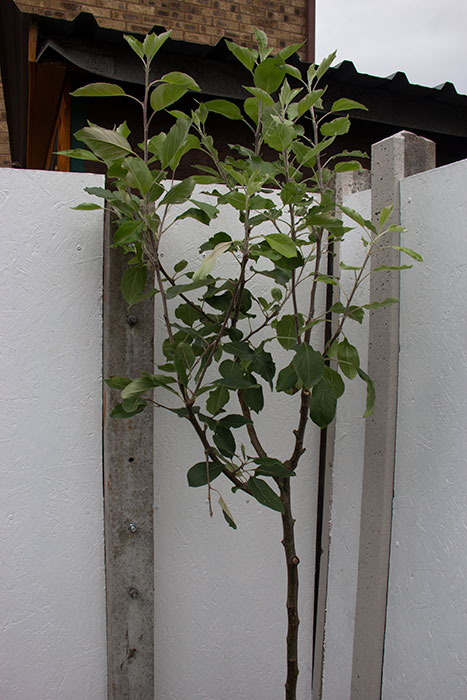
Apple Family Tree has three types of apples in it: Cox & James Grieve & Katy. There are different kinds of trees available, but we got one with these varieties on it. It seems magical, isn’t it?
Cox has a late crop, in early October. The fruit can be stored until January. Its history goes back to 1825. The fruit is orange over greenish-yellow with deep cream flesh that has sweet taste.
James Grieve is an early dessert apple, ready to be harvested in early September. Can be used for eating, juicing, and also for cooking, as it keeps its shape when cooked. Keeps for a month or so. It was raised by James Grieve in Edinburgh, the first recording being in 1893.
Katy is a bright scarlet dessert apple, ready to be picked up in early September. It is suitable for making fresh juice, cider, and is good for baking. This variety comes from Sweden, from the 1960s. Does not keep.
This is on an MM106 rootstock or a bush. We got it in a 12L container, similar to the cherry, but the tree is much taller. It is a dwarf tree, meaning that it will be between 2 and 3 m in height at maturity, as in 10 years. It is hardy and it can be grown everywhere in UK.
If you want to know more and fancy your own family tree, check Frank P Matthews’ website and both the cherry and the apple are from them. I bought the Apple Family and the Cherry from Embleys Nurseries (link to my review).

Right side of the garden. Flowers, from left to right:
Coreopsis
Allium Millenium
Oriental Roselily White
Poppy
Foxglove
Campanula
Oriental Roselily White
Calla lily
White Dahlia
Lily
Agapanthus Peter Pan – dwarf Lily of the Nile – perennial – needs sun – resists to temperature down to -10C – 5 years to reach maturity.
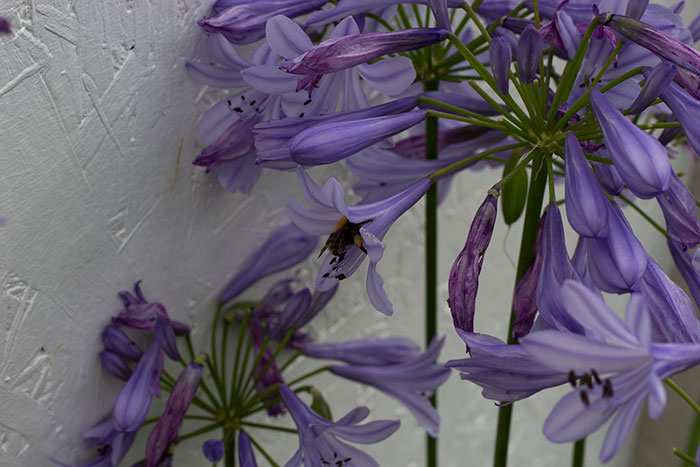
Agapanthus is another one of these flowers that attracts lots of pollinators. It also looks so beautiful. I love it. My husband suggested it. I wasn’t sure because it’s quite big, but he was right, it works nicely at the end of the raised bed.
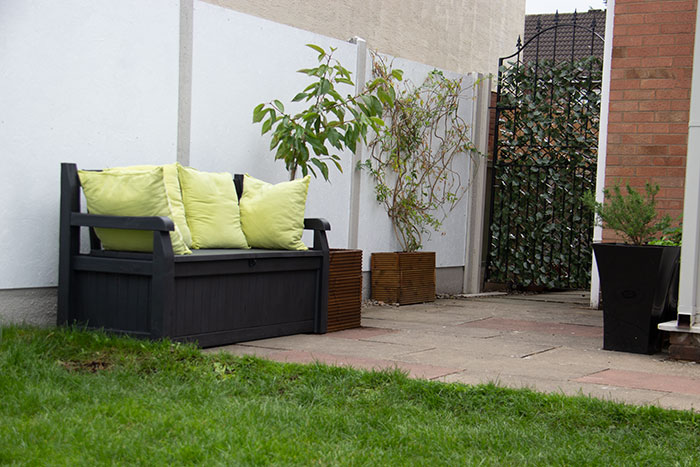
This is the second bench, very useful, it is worth every penny.
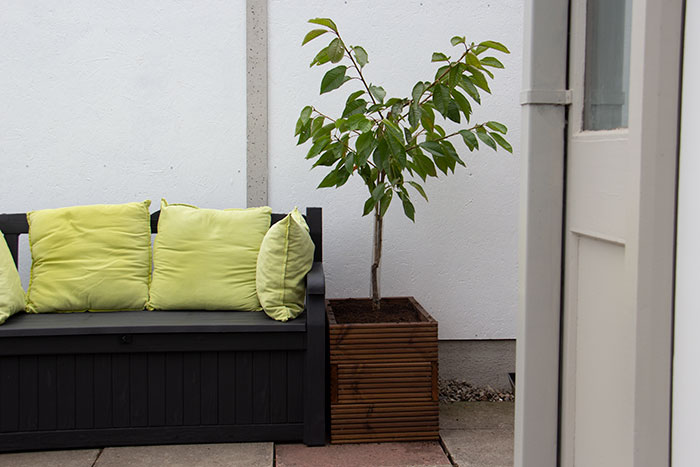
Cherry Sweetheart. Makes intense, sweet, and delicious fruits. We got it in a 11.5L container. It says that its fruits are ripening a bit later in the season, picking month is from late August.
It is a very good pollinator and that’s what we were looking for. We love having bees and butterflies in our garden, so this will provide more food for the little ones.
Out tree is a Gisela 5 rootstock, meaning that it is a patio tree. It is also called a very dwarf tree and works great in pots or confined spaces. This variety was developed at the Summerland Research Station, Canada, in 1990. Pruning should be minimal, only in late summer. It is recommended to pinch out growing tips of strong shoots in early summer, this will encourage bud formation in the following year.

Herbs and salads, from left to right:
Raspberry – from a few years, replanted and given a new lease of life;
Chicory
Pansy – edible flowers – very easy to grow;
Strawberry
Salad Cress – Rape & Cress;
Mustard
Rosemary

These are so amazing in salads. They taste like ordinary salad, nothing special, but they brighten up and “posh-en” up any salad. I’ve harvested pansies a few times and also chicory and salad cress and mustard and there is still plenty to harvest. I’m very impressed. I got the salad cress from Tesco, at 25p per small box. I planted 2 boxes in a pot and it grew like this in a couple of weeks. It’s so worth getting. If it stops growing, I can easily replace them. The mustard is grown from seed and I’m very pleased with it. It has a lovely mustardy taste, which is a nice addition in a salad.
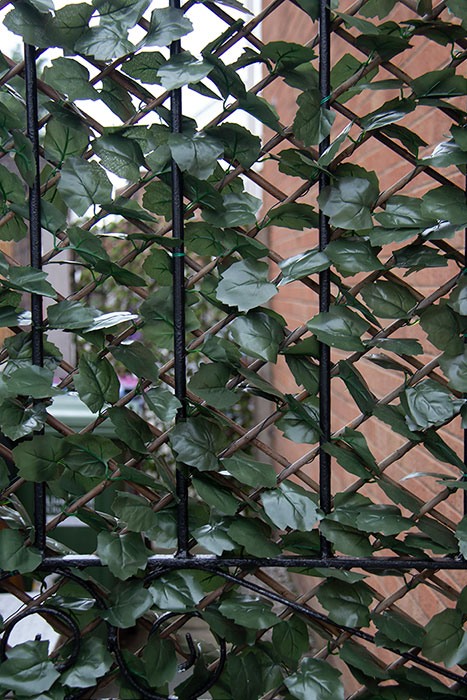
Lastly, the garden door has a new screen. It used to have a bamboo screen, but it needed replacing. We’ve opted for a plastic one as it means that this will keep for a long time. It saves money and, from my point of view, it’s an eco-friendly option as it does not need replacing, creating extra CO2 with transport, it needs no maintenance as in painting, again, no extra CO2 with that either.
I hope you’ve enjoyed the tour of my garden and thank you for reading all of it. Please feel free to share any gardening tips in the comments. I highly appreciate it.





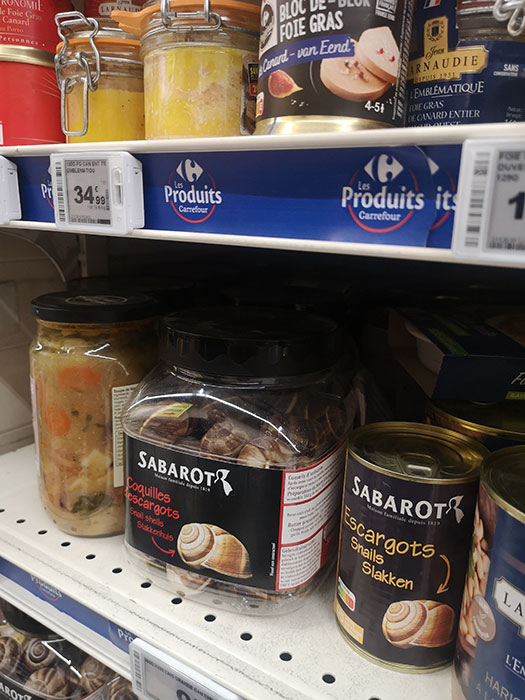


Ah, I missed this post! Your garden really has been transformed! It’s wonderful to have so many flowers! My husband loves Agapanthus so we have two separate patches of it! We had a Dahlia last year which has ONLY just flowered this year now! It took its time!
Your garden looks amazing, so many gorgeous flowers. Mine is rather running wild at the moment and you have given me inspiration to sort it out
Such a beautiful garden! We planted loads of flowers this year, but as our garden centre closed and remains closed until next year, there was a lot I struggled to get.
Next year though, those plants are mine!
Beautiful post, Anca! A lot of effort has gone into your garden and this post. You garden is so welcoming and colourful. I would be interested in having more plants for attracting bees. I love your bug hotel, and it’s so attractive to look at. I made one a long time ago at a workshop which was fun. Gardening is a therapeutic hobby for me too and I wish you joy in your garden. 🙂 xx
Helen
Your garden is so beautiful, and what a difference between the old and current state of it. The benches are great, and it’s so useful to have storage too. I love agapanthus, I had a potted one for many years, but then eventually it died. I keep thinking I should get a new one.
Is Festus smart about not eating plants? Foxglove is very pretty but could be lethal.
Thank you for sharing the pictures of your garden, I can now imagine you sitting on a bench and listening to your lessons.
Thank you. Festus is not eating anything unless is gets the “ok” from me or my husband. It was something we’ve trained him since we was a small pup, as in Romania some people leave poison for stay dogs hidden in sausages or meat.
The only plant I was concerned about was rose bush, as he plays and he might collide with a thorny bush when he is too eager to chase a ball. This is why we took out all the roses there were in the garden when we bought it.
Your garden looks great Anca. I love the plants and the flowers. The fig tree looks great.
The benches you got are fantastic!
Looks lovely. I’ve really found joy in my garden this year with lots of visiting bees and butterflies.
It all looks so beautiful! I can understand why you spend as much time as you can enjoying it. I hope you get some bountiful harvests from your trees. It’s pretty incredible how they can graft them together to have more than one variety of apple on a single tree!
I love it Anca, you did a fantastic job! Thanks for listing all the names of the plants/flowers. Very inspiring.
Meli
Looks super lovely. I need to work on my garden soon, hopefully the weather will pick up again soon
Well, first of all, your garden is beautiful. And I can see why it would be a wonderful haven for you as you study, particularly during these summer months. I’m so glad you could work out things well with your neighbors on the fence. And thanks for the information on the plants. I may refer back to this post more than once! It’s quite an achievement and a lot of hard work, and I salute you!
Thank you Jeanie xx
You know that I can’t remember the name of the flowers, so this will be my reference post, when I’m searching for details on how to care for these plants. I hope the names of the flowers will help you too.
Your garden is looking lovely! The white walls gives you something to focus on and the flowers will look so pretty as they cover the wall.
Gorgeous! This is really inspiring and has given me a lot of ideas for my own garden, when I get around to it. Plants are such a wholesome way to practice mindfulness and make your space feel more healthy and hygge, love it!